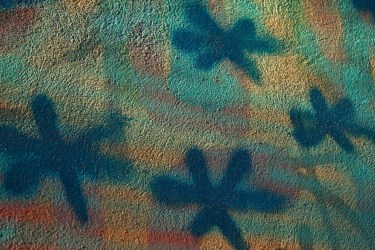A Hooper Gun can be used for spraying texture onto your ceilings or walls and this method are normally used for repairing walls, help you hide cosmetic problems on your walls, as well as create a whole new look for your room. It is also known as Texture Hopper which contains “hopper” on top of the gun that feeds the texture material that will relay it into the hand-held trigger sprayer beneath it.
There are areas that also several selections of texture pattern and thickness that you can see on the face of the Hopper gun. Besides that, it can also work with an air compressor and you need to play with the air pressure whenever you are working with the texture material.
What you need to do:
- Masking tape
- Drop Cloths
- Hopper
- Spray Texture
- Water
- Bucket
- Paint stick
- Scrap cardboard
- Safety goggle
Hopper Gun
Method:
- First of all, you must ensure that you empty the room that you want to do the texture or you can cover the surfaces using a drop cloth. This is very important as it will not spoil any of the room’s items. Many people choose to cover up the things that are found in the room, but it is still better to just remove them all.
- If possible you need to tape around all of your furniture to create a seal. The reason for doing this is because spraying the drywall will result to lots of dust and your room’s surrounding will be full of dirt. So, it is better to tape around all of your furniture. If your furniture is old and you are looking for a reason to replace them then it’s not a problem.
- For texturing a small section of your house wall or ceiling, it is recommended that you purchase a pressurized can of texture spray that is normally found at your local hardware stores or home improvement centre. If you are confused on which one to buy then better ask the sales assistant.
- You should always perform an experiment first on a piece of scrap board before you start spraying on the wall or ceiling in order to get the right size particles for that particular section.
- As for a large area, you need to use a spray or Hopper Gun to make the task easier. You can also use a bucket filled with water and mix it with your spray texture.
- You must adhere to the instruction and follow the ratio of water to spray texture, as recommended by the spray texture’s manufacturer. Then, use a paint stick to stir the mixture until it is well mixed and always bear in mind that a different size of hoppers will need a different amount of mixtures. You need to only mix the mixture for at least one hour so that the mixture will not dry too much.
- Next step is for you to attach your hopper to the hopper gun, tighten its clamp which is around the bottom of your hopper before pouring the mixture into the hopper gun.
- If you do not feel confident, try practicing on pieces of cardboard right until you achieve your preferred consistency. One example of the setting is the “popcorn” settings for ceilings or walls or also known as orange peel. You can choose this setting and experiment it on a piece of scrap wall board for getting the correct size of particles to be used.
- After that, you need to spray your walls gently and keep its nozzle moving at all the times when you spray so that you can avoid spraying too much texture in a single area. It is easier to add an additional texture rather than trying to remove heavily sprayed texture. Whenever you have accidentally sprayed too heavily on a certain area, you need to scrape it quickly while it is still wet and redo the spraying again.
- Ensure that you allow the texture to be able to dry thoroughly for at least 24 hours before you can proceed with your painting work.
- If you are still not confident or have never done any remodeling, texturing, or painting just because you do not know how to do it, there are other options that you can take for example, there are some lumber or hardware stores that provide special clinics in the evenings or weekends that can teach you how to use Hopper Gun or Spray texturing. Besides that, you can also learn it from books, internet or even from videos.
Additional Reading:
Crumble, Crackle, Burn: 120 Stunning Textures for Design & Illustration


